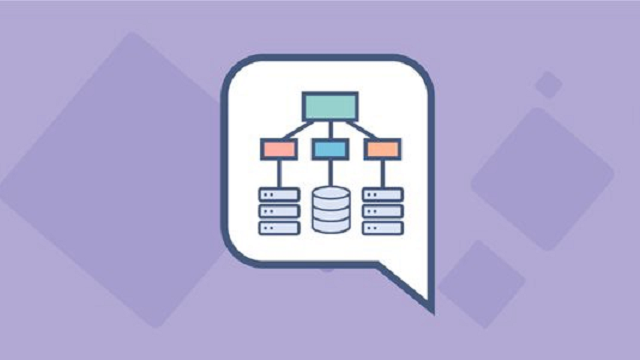Why Systems Design Matters for MLEs
Let’s be honest—technical interviews at FAANG companies are tough.
You’re expected to code, explain algorithms, and most importantly, design scalable ML systems.
That’s where many candidates get stuck.
Most people prepare with Leetcode, but system design—especially machine learning system design—is a different beast.
The good news? There’s one book that simplifies it all. It gives you real-world design frameworks, covers ML-specific challenges, and mirrors FAANG interview expectations.
Let’s dive into why it’s the best.
What’s the Book We’re Talking About?
The title says it all:
“Designing Machine Learning Systems” by Chip Huyen.
This book isn’t just theory—it’s hands-on, practical, and interview-ready.
Chip Huyen is a Stanford lecturer and AI practitioner. She’s worked at top companies like Netflix and Snorkel AI. So, she gets what FAANG interviews really ask.
What Makes This the Best Machine Learning Systems Design Book for FAANG MLE?

Here are the biggest reasons why this book outshines others:
1. Covers Real FAANG Interview Topics
FAANG interviewers love asking about:
- Building recommendation systems
- Designing real-time ML pipelines
- Managing model retraining and serving
- Scaling ML systems across millions of users
This book walks you through exactly these topics, using examples and diagrams.
2. Clear, Easy-to-Follow Language
You won’t get lost in jargon.
Chip writes in a way that even someone new to ML system design can follow. Complex ideas are broken down into simple, readable chunks.
Example: Instead of “model orchestration in distributed dataflow frameworks,” she says, “how to run your models reliably across multiple machines.”
3. Focuses on the Entire ML Lifecycle
Most books only focus on model training.
This one covers the whole pipeline, including:
- Data collection
- Feature engineering
- Model deployment
- Monitoring and feedback loops
That’s exactly what interviewers expect MLEs to know.
4. Teaches Trade-offs and Decision Making
In FAANG interviews, it’s not just what you build—it’s why you choose certain components.
This book shows you how to think about:
- Choosing batch vs streaming data
- Using offline vs online evaluation
- Deciding between different storage systems
You’ll learn to explain your choices, just like you need to in interviews.
Infographic: What FAANG MLE Interviews Expect vs. What the Book Teaches
Example Topics You’ll Find in the Book
- How to Serve ML Models at Scale
(Great for explaining latency vs throughput) - Online Learning vs Batch Updates
(Helps you talk about time-sensitive ML systems) - Feature Stores
(Common question: “How do you manage features across teams?”) - Model Monitoring and Retraining
(Critical for MLEs working in real-time apps)
Each chapter ends with key takeaways, examples, and questions. It’s like preparing for an interview while learning real-world ML architecture.
Real Feedback from Readers
“I used this book to prepare for a Meta interview—and it nailed 3 out of 4 questions I was asked.”
— Software Engineer turned ML candidate
“Finally, a book that teaches why we make certain design choices—not just what they are.”
— Data Scientist prepping for FAANG
Other Helpful Features
- Diagrams on nearly every page – perfect for whiteboard interviews
- Case studies from real tech companies – see how it works in production
- Discussion of common pitfalls – know what to avoid in design
- References to open-source tools – like Airflow, TFX, Feast, and Kubeflow
How to Use This Book to Prepare
Here’s a sample study plan:
| Week | Focus Area | Chapter to Read |
| 1 | System Overview & Pipelines | Chapter 1 & 2 |
| 2 | Data + Features | Chapter 3 & 4 |
| 3 | Training and Evaluation | Chapter 5 & 6 |
| 4 | Deployment and Serving | Chapter 7 & 8 |
| 5 | Monitoring and Feedback Loops | Chapter 9 & 10 |
| 6 | Practice System Design Questions | Review full book |
Pair this with mock interviews or FAANG-style system design prompts. You’ll feel much more confident by week 6.
Where to Get the Book

You can grab “Designing Machine Learning Systems” from:
- Amazon
- O’Reilly Media
- Local bookstores or digital versions via Kindle or PDF
Want to preview? The author’s website has slides and outlines too.
Final Thoughts: Why This Book Is Worth Your Time
Preparing for FAANG MLE interviews is stressful—but the right tools make it manageable.
This book stands out because it’s written by someone who understands the interviews, the role, and the systems you’ll work with on the job.
If you’re serious about becoming a machine learning engineer at a top tech company, this is hands down the best machine learning systems design book for FAANG MLE interviews.
It will save you time, boost your confidence, and help you speak like a system design pro.
Frequently Asked Questions (FAQs)
Topic: Best Machine Learning Systems Design Book for FAANG MLE Interviews
1. What is the best machine learning systems design book for FAANG MLE interviews?
Answer:
The top recommendation is “Designing Machine Learning Systems” by Chip Huyen. It covers the entire ML lifecycle, explains system trade-offs, and mirrors the types of real-world scenarios and questions asked in FAANG interviews. It’s known for being beginner-friendly yet deeply insightful.
2. Why is system design so important in FAANG MLE interviews?
Answer:
At FAANG companies, ML Engineers do more than just train models—they design scalable systems that handle data pipelines, retraining, deployment, monitoring, and performance. Interviewers test your ability to make design choices, think through trade-offs, and communicate your system architecture clearly.
3. Does the book include real FAANG interview-style case studies?
Answer:
Yes. The book walks through step-by-step examples like building recommendation engines, real-time ML serving systems, and feature stores. These closely resemble what you might face in an actual MLE system design round at companies like Google or Amazon.
4. Is the book beginner-friendly? Do I need a lot of prior experience?
Answer:
The book is very beginner-friendly. It assumes a basic understanding of machine learning but explains complex system design concepts in clear language. Readers without production experience can still understand and apply its content.
5. Does this book help with other MLE roles outside FAANG?
Answer:
Absolutely. While the focus is on FAANG-level expectations, the principles, architectures, and frameworks discussed are useful for any machine learning engineer role—startups, midsize tech firms, and AI product teams alike.
6. How is this book different from traditional ML books?
Answer:
Most ML books focus only on training models. This book focuses on building, deploying, and maintaining ML systems. It explains real-world tools (like Airflow, Feast, TFX), monitoring, testing, and how ML fits into the larger software ecosystem.
7. What topics does the book cover that are relevant for interviews?

Answer:
Topics include:
- ML system components (data ingestion, training, serving)
- Feature engineering and feature stores
- Online learning vs batch learning
- Real-time vs batch pipelines
- Scalability, monitoring, logging
- Model evaluation, A/B testing
- Feedback loops and model drift
Each chapter focuses on design reasoning—exactly what interviewers care about.
8. How can I best use this book to prepare for interviews?
Answer:
Use it like a study guide:
- Read 1–2 chapters per week
- Summarize key points with diagrams
- Practice whiteboard system designs
- Pair it with mock interviews
- Focus on “why” each design choice matters
Many readers say 6–8 weeks of study using this book helped them pass tough interviews.
9. Is this book available in digital format?
Answer:
Yes. You can find it in both print and digital formats. It’s available on Amazon, Kindle, O’Reilly Online, and other platforms. Chip Huyen also shares related resources and slides on her official website.
10. Can this book help with on-the-job success too?
Answer:
Definitely. This isn’t just an interview book—it’s also a practical guide for real-world ML engineering. Teams working in production environments can use its design patterns, trade-off strategies, and system blueprints to improve their ML workflows.
